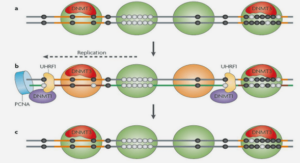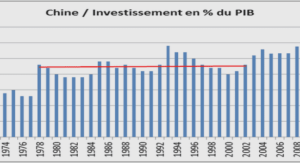A New Route for the Synthesis of Uniform Nanozeolites with Hydrophobic External Surface in Organic Solvent Medium
Supporting information Synthesis
The synthesis of nanozeolites involves two steps: (i) In the fist step, clear zeolite gel solutions were prepared with molar composition of 2.5 TPAOH: 10 SiO2 : 250 H2O and 0.07 Na2O : 2.4 (TMA)2O : Al2O3 : 4 SiO2 : 264 H2O for silicalite-1 and faujasite, respectively. In a typical silicalite-1 gel synthesis, 35g of 20% aqueous solution of TPAOH was added to 19.5 g of TEOS in 25 g of water. The resulting clear solution was stirred for 24 h at room temperature. These gel solutions were then heated at 80oC for 24 h to speed up the formation of protozeolitic species (known as zeolite seeds). (ii) In the second step, 10 g of gel solution was added to 500 ml of a solution of toluene containing nbutanol (30% wt) and a proper amount of hexadecyltrimethylsilane. The organosilane was in a proportion of less than 10 mol% in regards to the silica content in the gel. Tolulene is a suitable medium for the modification of zeolite with organosilane and n-butanol acts as a surfactant. The functionalization reaction was carried out batchwise in a glass reactor under stirring at 60oC for 12 h and reflux. After 12 h of stirring, a mixture of only one clear liquid phase was observed. This mixture was then transferred to an autoclave for further hydrothermal treatment at 150oC for 3 days, and 180oC for 5 days for faujasite and silicalite-1 respectively. After the crystallization, the crude solution of nanozeolite product was precipitated with ethanol and further isolated by centrifugation and then washed with ethanol for several times. The product was then dried at 100ºC for 24 hours and calcined at 550ºC for 5 hours.The conventional synthesis of the zeolites in aqueous medium was carried out according to the procedure described in the literature.7 For the synthesis of silicalite-1, the temperature was 150oC and the crystallization time was 3 days, whereas, for that of FAU zeolites, the temperature and crystallization time were 100oC and 5 days.
Characterization
The FTIR spectra were recorded using a Biorad FTS-60 spectrometer on sample wafers. Powder XRD patterns of the materials were recorded on a Philips X-ray diffractometer (PW 1010 generator and PW 1050 computer assisted goniometer) using nickel-filtered CuKa ( = 1.5406 Ǻ) radiation, 0.0258 step size and a 1 s step time. The crystal size of the zeolites was estimated from the broadening of the XRD peaks using the Scherrer equation: d = 0.9λ /(w-w1) cos θ ; where d is the crystal diameter, w and w1 are the half-intensity width of the relevant diffraction peak and the instrumental broadening, respectively, λ is the X-ray wavelength and θ is the angle of diffraction. The following reflections were used for the crystal size determination: for silicalite-1, [501] and [151] plans corresponding to the 2θ peaks at 23.10 and 23.75º; and for faujasite, [440] and [733] planes corresponding to those at 20.30 and 29.55º.
Nitrogen adsorption/desorption isotherms at -196oC were established using an Omnisorp-100 apparatus. The specific surface area (SBET) was determined from the linear part of the BET equation (P/Po = 0.05 – 0.15). High-resolution TEM images were obtained on a JEOL 200 CX transmission electron microscope operated at 120 kV. The samples for TEM were prepared by dispersing the fine powders of the products in slurry in ethanol onto honeycomb carbon copper grids. Solid-state 29Si MAS NMR spectra were recorded at room temperature on a Bruker ASX 300 spectrometer.






